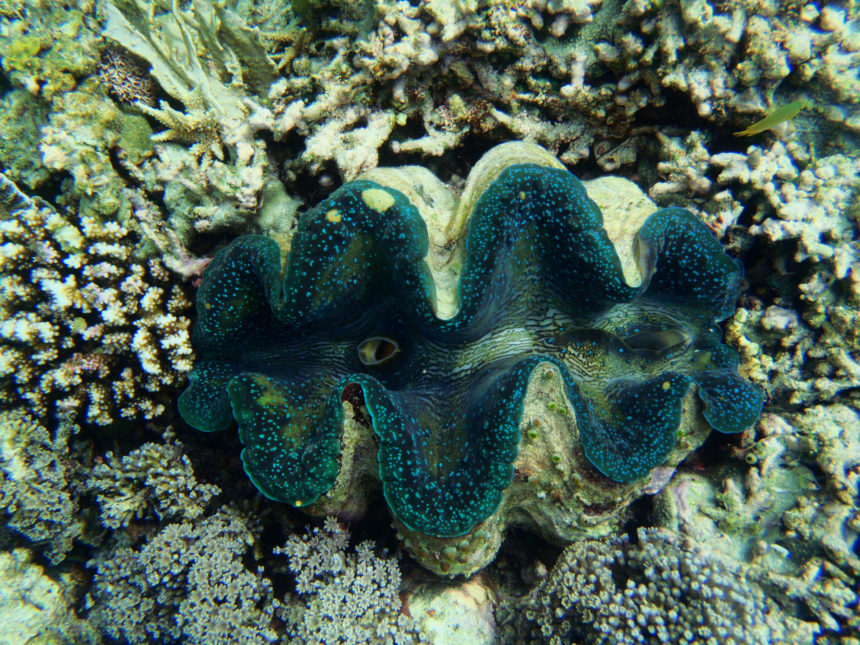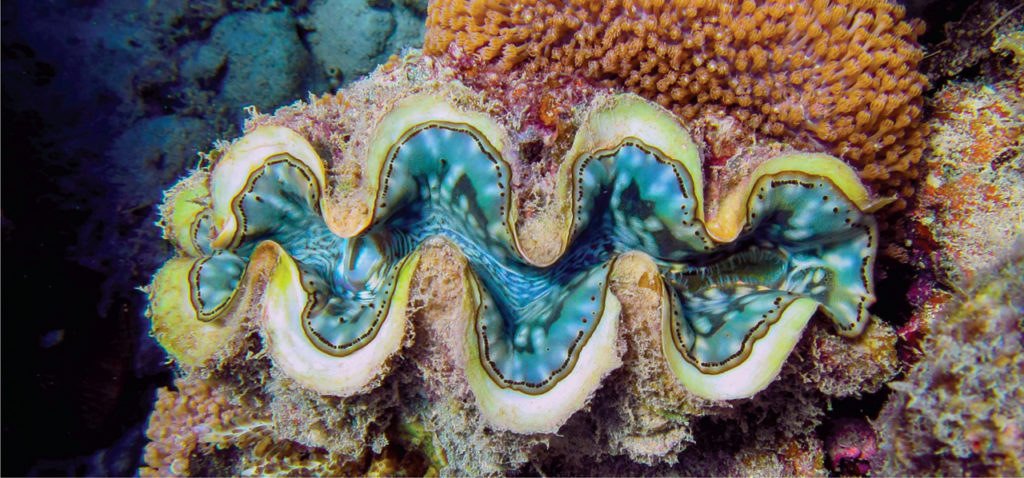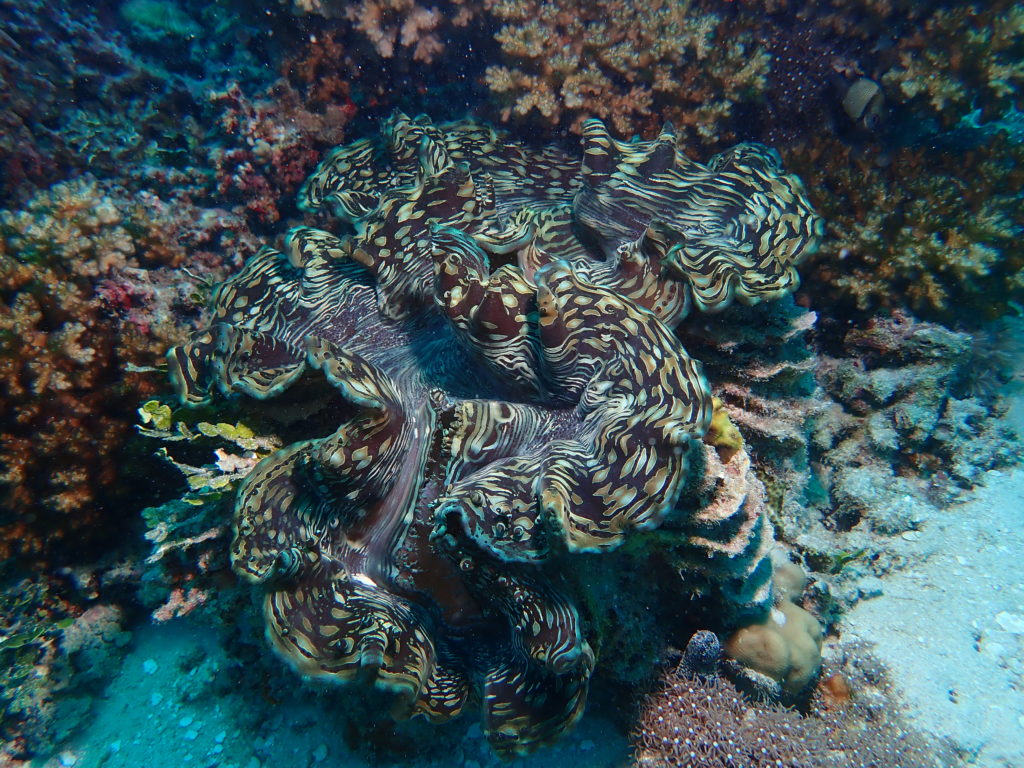Clams are one of the mollusks in the bivalve class that are often found in coral reef ecosystems. They have two genera (Tridacna and Hippopus),1 share a symbiotic life with Zooxanthellae photosynthetic algae2 and live in the Indo-Pacific region. So far there are 12 types of clams that have been identified, eight of them are found in Indonesia.
Clams are divided into two groups based on their way of life, the first group is clams that live by embedding themselves in massive corals such as the Tridacna crocea species; the second group is clams that live freely and found on the bottom of reefal areas such as Tridacna squamosa.3
Clams have only one chance to find a place to grow because they are sessile (immobile), that is why they are often used as a bio-indicator to measure the quality of water. Clear water is the most suitable habitat for clams. High turbidity in water can cause death to clams and disrupt the photosynthesis process of symbiotic algae that live in the clam’s mantle.4 In addition, damage to coral reefs also means damage to clams and it can be caused by a variety of factors, both natural or from human activities. Bawah Island is the perfect habitat for clams to grow due to its clear waters and less harmful human activities. Several species found in Bawah Island are scaly calm (tridacna squamosa), giant clam (tridacna gigas), horse’s hoof clam (hippopus hippopus) and crocea clam (tridacna crocea). These clams are easy to find in snorkeling/diving spots around Bawah. Scaly and giant clams usually reside in coral areas that are 5-10 meters deep like Tokong, Setigi and Lidi; crocea clam meanwhile likes to live in shallow water with a depth that’s less than two meters like West and East Lagoon; horse’s hoof clam lives on sandy substrate like Coconut Lagoon and areas that are up to six meters deep.
Clams have an important role both in ecological and economic sectors, it is known that they are economically important fishery commodities. The high demand for clams in the domestic and international markets has made clams prone to exploitation. Economic factors are the main cause of clams overfishing, causing a decline in their populations.5 Although clams have been designated as protected biota based on Law No.5 / 1990 and PP No. 7/1999 on the preservation of plants and animals, in reality clams are still being captured up to this day. This happens because there is still a lack of supervision over the utilization of clams. In terms of environmental conditions, pollution and other factors are strongly suspected as the causes for their populations decline.
The existence of clams in nature is very important for ecosystem equilibrium. Clams that are filter feeders (absorb food from water) indirectly help in purifying the surrounding water. Clams are a natural bio-filter, they are able to absorb ammonia and nitrates in seawater that are then used to supply the Zooxanthellae.6 Hazardous substances such as heavy metals also get absorbed by clams.
Efforts to protect clams are still being carried out, including through cultivation technology which was developed based on the biological characteristics of clams. Clam cultivation in Indonesia has been successfully carried out by the government, universities and the private sector even though it is still rare.
The Government of Indonesia has also made a national action plan for conservation of clams that covers three main aspects of conservation, namely efforts to protect, preserve and sustainable use. As an organization we have been conducting activities like reef health monitoring, maintenance, habitat protection and education on marine conservation to local communities as a way to help maintain, and increase, the population of clams and other marine creatures in the area.
References:
1. Pada, Defy., Boneka, Farnis., Mamangkey, Gustaf. Identification and Ecological Aspects of Tridacninae in the Shallow Waters of Venu Island, District Kaimana, West Papua. Jurnal Ilmiah Platax 2013; Vol 1-2.
2. Huelsken, T., Keyse, J., Liggins, L., Penny, S., Treml, EA. A Novel Widespread Cryptic Species and Phylogeographic Patterns within Several Giant Clam Species (Cardiidae: Tridacna) from the Indo-Pacific Ocean. PLoS ONE 2013; vol (8) :11-13.
3. Kastoro, W. Big Clams. Pewarta Oseana 1979; Vol (3):1-6.
4. Sadili, D., Sarmintohadi., Ramli, I., Miasto, Y., Puspitasari, R., Reasdiana., Terry, N., Annisa, S. National Action Plan, Kima Conservation. Ministry of Marine Affairs and Fisheries of Republic of Indonesia. 2015.
5. Emola, I.J., Ambariyanto, dan Muslim. The Growth of Juvenile Clams of Tridacna squamosa in Different Coral Reefs Ecosystem. In : Seminar Nasinal Tahunan Ke-V. FPIK. Undip. Semarang. 2015 ; 701
6. Braley, R. D. (2009). Giant clam biology and culture. http://aquasearch.com



